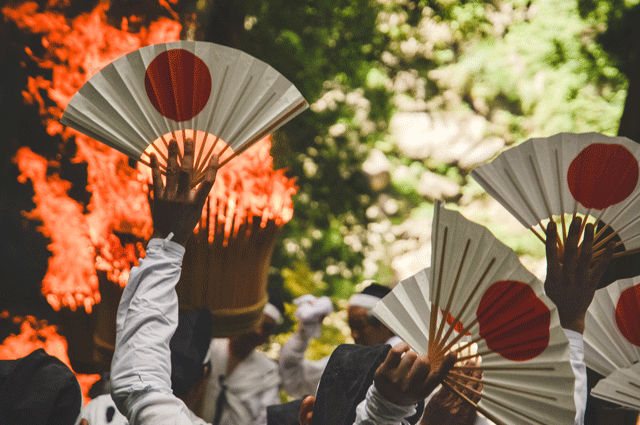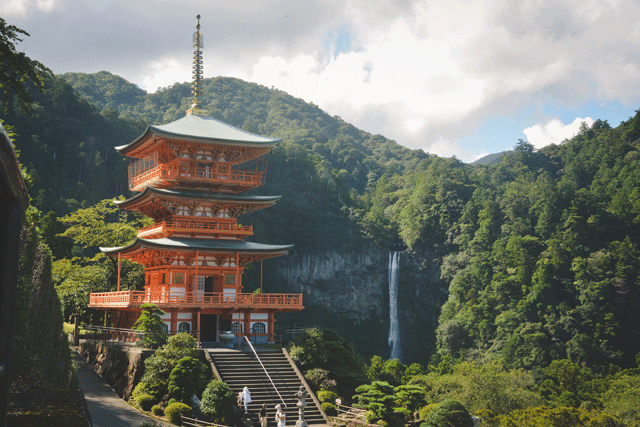Shrouded beneath the thick branches of the Nachi Primeval Forest, the Kumano Kodo—the most sacred pilgrimage trail in Japan today—zigzags through the Kii Mountains of the Wakayama Peninsula. The five ancient routes that make up the Kumano Kodo lead to one of the most spiritual places in the country: Nachi Falls.
Three shrines surrounding Mt. Nachi, together referred to as Kumano Sanzan, are the headquarters for the more than 3,000 Kumano shrines across the country. The most visited is the Kumano Nachi Taisha, a shrine poised just beneath the famed falls. The Nachi Falls, measured from top to drop, are 133 meters in length—the tallest uninterrupted waterfall in Japan—and one of 48 in the Kii Mountains.
The sharp cliff and glistening falls, catching the afternoon light, are the backdrop for one of the oldest and largest annual fire festivals in the country, Nachi no Ogi. Nachi Falls marks the entrance to the mountain range, and is believed to house the god of eternity: many make the journey to receive a blessing for the afterlife beneath the mist.
Nachi no Ogi celebrates life, the afterlife, and everything in between. The festival connects the old site of the shrine, built 1,700 years ago, to the smaller and newer Hiro Shrine. The site has been renovated dozens of times due to storms, slides, and fires. Today the festival is held every July 14 from ten in the morning until three in the afternoon. These centuries-old traditions are still practiced: they are meant to unite the gods of the Kii Mountains and bring good health to the living, bountiful crops to the hungry, and a blessed eternity for those who have passed.
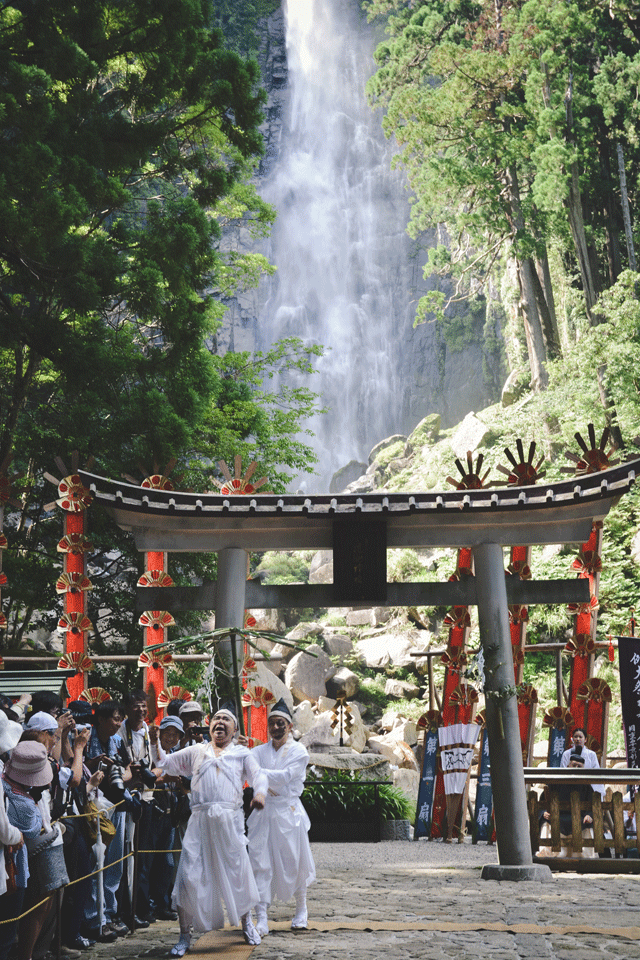
A priest, his face painted with hot ashes, marches across a cobblestone path, his voice ringing out, drowning out Nachi Falls: “Sen nen appari!” He calls our for a blessed eternity. Voices echo his wishes, and chant along with him. He marches in a circle thrice before retiring; a flutist plays for a moment while onlookers, sweaty from the humid July air, feel the mist from the falls on their faces. The song comes to a lull, then there is stillness.
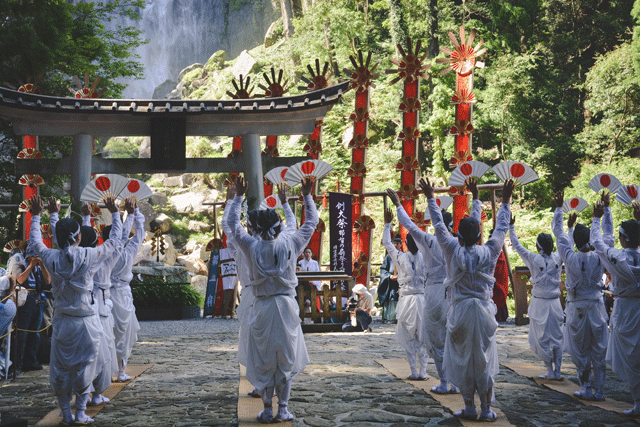
The raised fans, the same ones used to fan the flames, are the only prop used in the dance. A drum steadies the rhythm of their movements, and a flutist guides them through the steps (Nachi no Dengaku).
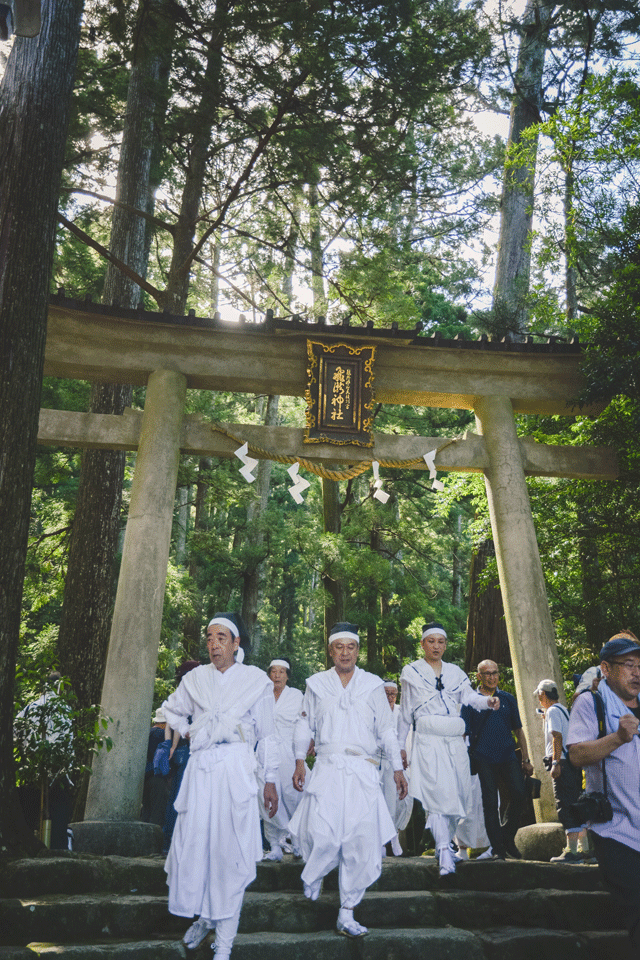
Volunteers and those receiving training pass through the Torii Gate of Hiro Shrine, ready to retire at the top of the mountain. Throughout the day they were cheered on, and celebrated as local heroes. Many visitors clamored for photos and souvenirs from the fire-bearers, asking for fans and pieces of the burned torches.
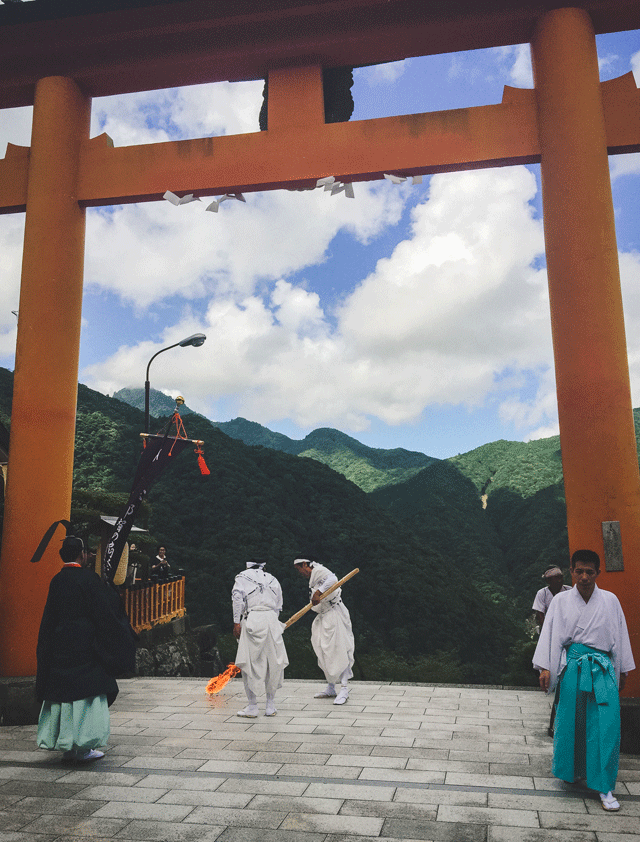
Just before two in the afternoon, two white-robed men, overseen by the head priest, stepped to the edge of Kumano Nachi Taisha, and lit the first torch. The chain reaction started; a dozen others were quickly lit – these sacred flames would be used for the much larger torches later, near the falls. The men then lead the procession down the steep steps, a parade of monks, the head priest, miko (priestesses), and volunteers, towards the waterfall. The annual event has started the same way for more than fifteen hundred years.
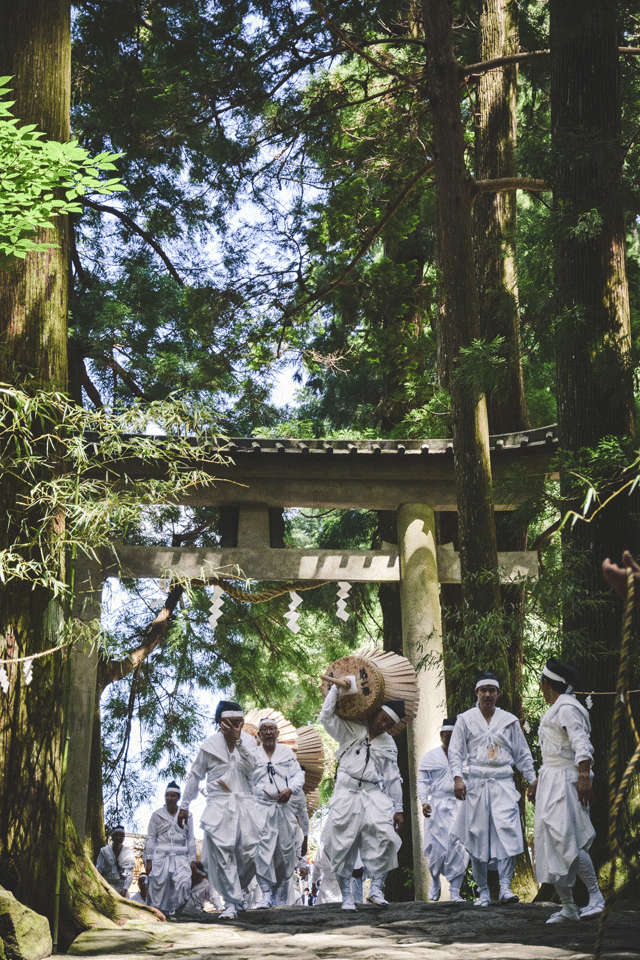
Following the procession of the lit torches come the stars of the day: the twelve volunteers who have been chosen to carry the 50 kilograms of cut and polished pine torches, to be doused in gasoline and lit by the holy flames. Held together by a thin twine, the giant torches have been made the same way for centuries.
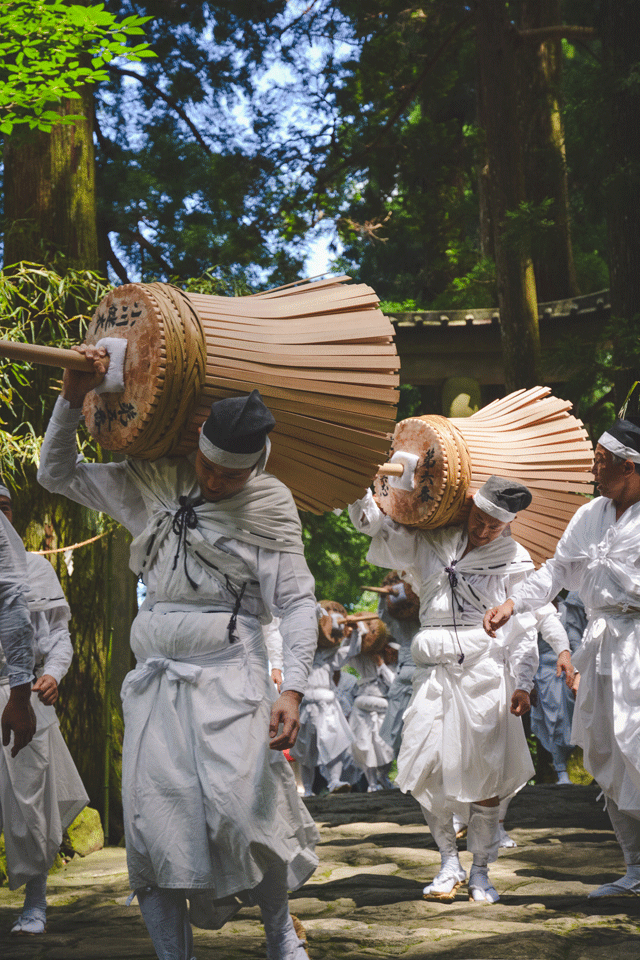
These torches will be carried up and down this slope half a dozen times before they are paraded back down to the falls to be extinguished.
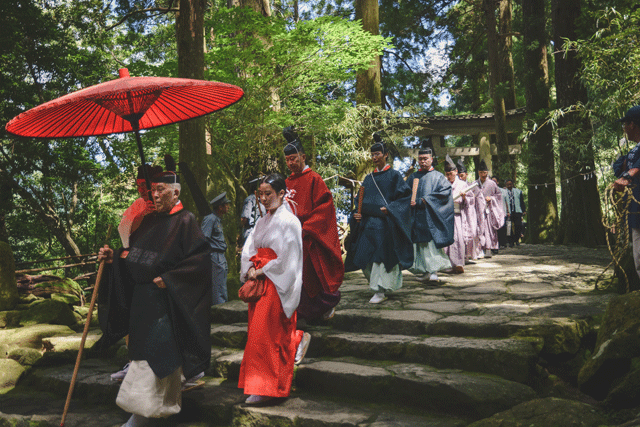
The head priest, flanked by a miko and attendant, strides down the mountain to bless the torches just before they are lit.
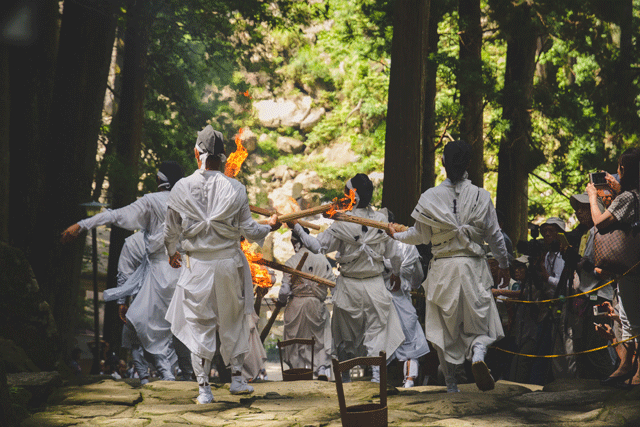
The initial twelve, carrying the holy flame, make their way one last time down the mountain where the 50 kilogram-sized torches await to be lit. Wooden pails of water are placed every few steps apart in case of emergency. It is common to see volunteers take a scoop of water in their mouth and spray it at the flames.
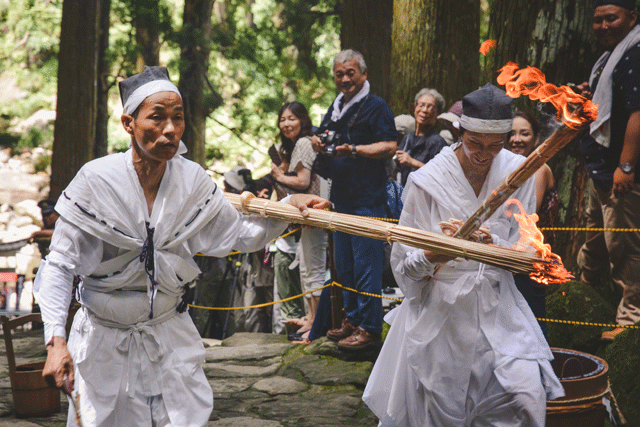
The two men from the top of the mountain have made their way to the shrine, and met a priest at the bottom. After receiving a blessing at the bottom of Nachi Taki, they make their way back up, to meet and light the fires of the other torches.
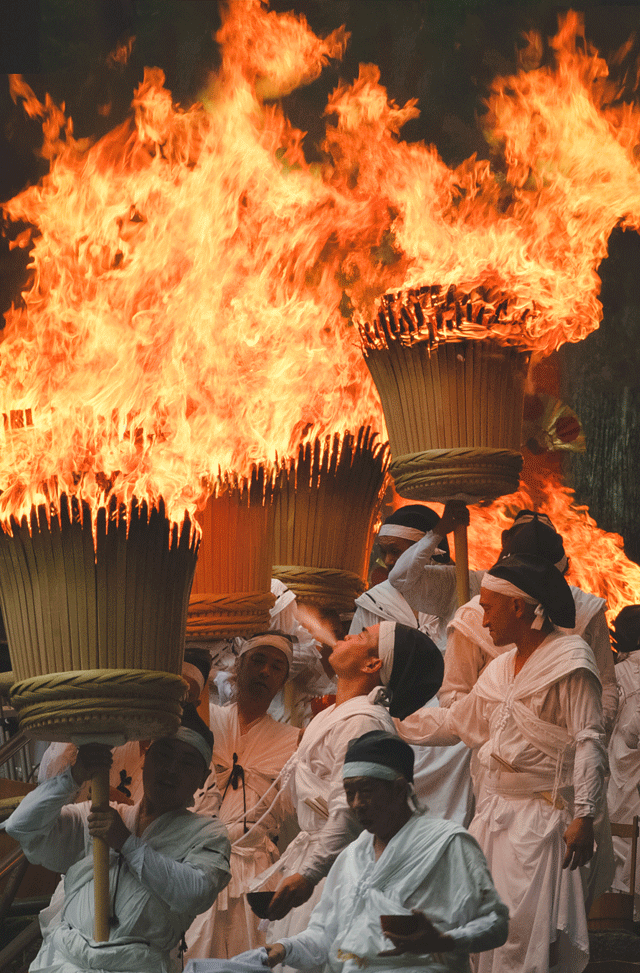
The heat from the blazing hot torches can be felt several dozen meters away. Often, the fires look like they’re out of control, the unpredictable flames causing the carrier to move unexpectedly left and right to regain their balance. The immediate danger is part of the thrill of the spectacle.
Photos by Natalie Jacobsen

